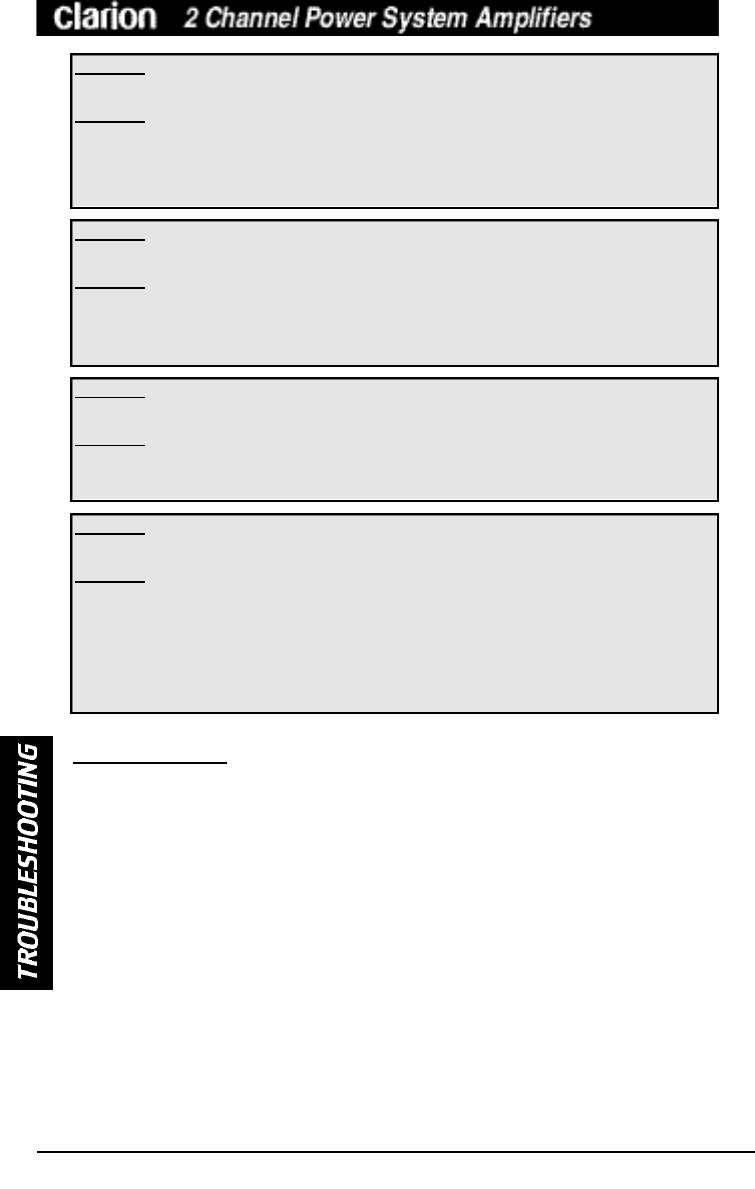
14
Problem
Distorted audio.
Solution
Gain is not set properly, or damaged speaker cones. Review Setting Gain;
inspect each speaker cone for signs of damage (i.e. frozen cone, burning smell,
etc.)
Problem
Audio lacks punch.
Solution
Speakers wired incorrectly, which causes cancellation of bass frequencies.
Check polarity of wires from amplifier to each speaker as defined by the
system design.
Problem
Amplifier fuse keeps blowing.
Solution
Incorrect wiring or short circuit. Review Installation and check all wiring
connections.
Problem
Whining or ticking noise in the audio with engine on.
Solution
Amplifier is picking up alternator noise or radiated noise. Turn down input
gain; move audio cables away from power wires. Check power and ground
connections on amplifier; install an in-line noise filter on source unit’s power
wire; check alternator and/or voltage regulator; test for weak battery or add
water to battery
PRODUCT SPECS
APX200.2 APX400.2
Frequency Response
Signal Noise Ratio
THD
Input Sensitivity Low Level
Input Sensitivity Speaker Level
Max. Power Output
Cont. Power Output
2-Ohm Stereo Output
Bridged Power
Dimensions
Current Consumption at output
@ max power
20Hz ~ 20kHz
>100db
.05% all channels driven
250mV ~ 2.5 V
500mV - 5V
220w (110 x 2)
100w (50w x 2) @.08% THD
110 x 2 @ .05% THD
220 x 1 @ .05% THD
2 1/8”H x 8 1/4”W x 9” L
28A @ 235 Watts
20Hz ~ 20kHz
>98db
.05% all channels driven
250mV ~ 2.5 V
500mV - 5V
380w (190 x 2)
200w (100w x 2) @ .08% THD
190 x 2 @ .05% THD
280 x 1 @ .05% THD
2 1/8”H x 8 1/4”W x 12” L
43A @ 382 Watts


















